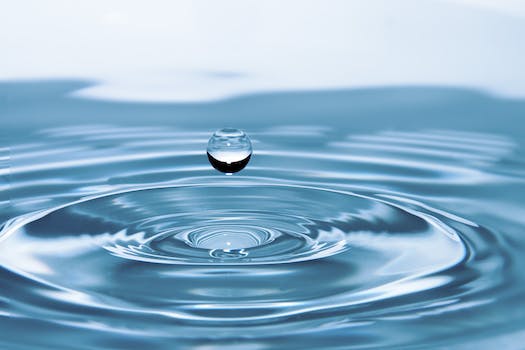-
Table of Contents
- How to Confirm the Purity of Water: A Comprehensive Guide
- Understanding the Properties of Pure Water
- Visual Inspection
- Chemical Tests
- Physical Properties
- Advanced Testing Methods
- Conclusion
- Q&A
- 1. How can I visually inspect water for purity?
- 2. What is the pH of pure water?
- 3. How can I test for chlorine in water?
- 4. What are some physical properties of water that can help confirm its purity?
- 5. Why is it important to confirm the purity of water?

Water is a vital resource that we rely on for our daily needs, from drinking to cooking to cleaning. Ensuring that the water we consume is pure and free from contaminants is essential for our health and well-being. In this article, we will explore how you can confirm that a colorless liquid given to you is indeed pure water.
Understanding the Properties of Pure Water
Before we delve into the methods of confirming the purity of water, it is important to understand the properties of pure water. Pure water is colorless, odorless, and tasteless. It has a neutral pH of 7 and a specific gravity of 1.0. Additionally, pure water has a high surface tension and a high boiling point of 100 degrees Celsius.
Visual Inspection
One of the simplest ways to confirm the purity of water is through visual inspection. Pure water should be clear and transparent, without any visible particles or impurities. If the liquid appears cloudy, discolored, or has floating particles, it may indicate contamination.
Chemical Tests
There are several chemical tests that can be conducted to confirm the purity of water:
- Test for pH: Pure water has a neutral pH of 7. You can use pH strips or a pH meter to test the acidity or alkalinity of the liquid.
- Test for Chlorine: Chlorine is commonly used to disinfect water. You can use a chlorine test kit to check for the presence of chlorine in the liquid.
- Test for Total Dissolved Solids (TDS): TDS meters can measure the concentration of dissolved solids in water. Pure water should have a low TDS reading.
Physical Properties
There are certain physical properties of water that can help confirm its purity:
- Boiling Point: Pure water has a boiling point of 100 degrees Celsius at sea level. You can boil the liquid and check if it boils at the correct temperature.
- Freezing Point: Pure water freezes at 0 degrees Celsius. You can freeze the liquid and observe if it freezes at the expected temperature.
Advanced Testing Methods
For more advanced testing, you can send a sample of the liquid to a certified laboratory for analysis. They can conduct a range of tests, including microbiological analysis, chemical composition analysis, and heavy metal testing, to confirm the purity of the water.
Conclusion
Confirming the purity of water is essential to ensure that we are consuming safe and clean water. By understanding the properties of pure water and conducting various tests, we can verify the quality of the liquid given to us. Remember, when in doubt, it is always best to seek professional testing to guarantee the purity of the water.
Q&A
1. How can I visually inspect water for purity?
You can visually inspect water for purity by checking if it is clear and transparent, without any visible particles or impurities.
2. What is the pH of pure water?
The pH of pure water is neutral, at a value of 7.
3. How can I test for chlorine in water?
You can test for chlorine in water using a chlorine test kit.
4. What are some physical properties of water that can help confirm its purity?
Physical properties such as boiling point and freezing point can help confirm the purity of water.
5. Why is it important to confirm the purity of water?
Confirming the purity of water is important to ensure that we are consuming safe and clean water, free from contaminants.






